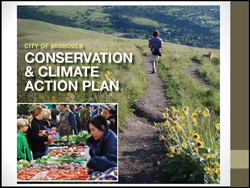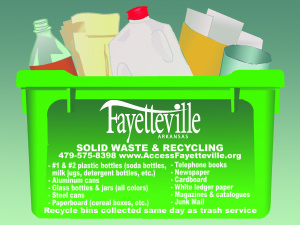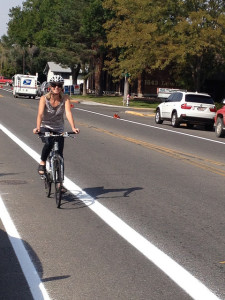Read about Caroline’s description of energy tracking importance;
When I was interviewing for my position with the City of Missoula, my supervisor was very clear that part of my term of service would consist of the not quite thrilling duties of energy tracking. As a term, energy tracking does not sound inherently dull. However, with a little digging you realize that tracking energy use is essentially wading through mountain-high piles of utility bills and cross checking usage rates to ensure the information is accurate and up to date. It is certainly not the most exciting part of my day, but it’s a task that I’ve been well aware of from the moment I started considering this position. During that initial conversation with my site supervisor, we both reckoned that it was “seeing how the sausage was made” in the world of conservation and sustainability. It’s not glamorous, we said, but that doesn’t diminish its importance and value. As the hiring process continued, we repeatedly agreed that it’s a necessary and critical aspect of the work Missoula is doing to become carbon neutral. Now, as I’m in the thick of both utility bills and a grey Missoula winter, I could not believe this more firmly.
As a university student, conversations and thoughts frequently revolved around how you were going to create change. In those moments, it was easy to imagine an action-packed future free of “grunt work.” My friends and I would picture ourselves on the front lines of our respective issues – whether that was fighting climate change, improving healthcare systems, or stopping sexual assault. Somewhere between graduation day and the initial weeks of work, my idea of the front lines became hazy and enigmatic. Perhaps the front lines don’t really exist, I thought. Slowly, I came to realize that all of this work, no matter the size, contributes to the overall mission and propels progress. Most importantly, I learned that everyone has spent some of their time seeing how the “sausage is made,” if you will. I have now spent several weeks making this metaphorical sausage, and I think I’ve even surprised myself with how thankful I am for the experience. All of this data collection and tracking is critical to producing Missoula’s first carbon emissions inventory, a touchstone for the Climate Action Plan. As I’ve become intimately familiar with our energy use, it’s become increasingly clear that the final report will only be as good as the data that comprises it. Without accurate and precise data, capital improvement projects aimed at increasing efficiency and reducing consumption will falter. Planning for the future requires a thorough knowledge of the past, and plans built on false information will fail to meet their objectives. Say what you will about spreadsheets and utility bills, you won’t shake my belief that this is important work.

Of course, my time hasn’t been completely consumed by energy tracking. There are still plenty of great events, stimulating conversations, and exciting projects to participate in and contribute to each and everyday. On the days when my spreadsheet feels particularly daunting, I remind myself that it’s nearly over and I look forward to an upcoming green building conference in Big Sky, MT. Thoughts of skiing never fail to overshadow the occasional monotony of utility bills.
 Caroline Lauer graduated from Harvard University in May of 2014 with a degree in History and Literature. She completed course work at the Graduate School of Design, and hopes to pursue a Masters of Urban Planning in the near future. Caroline is serving with the City of Missoula this year, updating their greenhouse gas emissions inventory.
Caroline Lauer graduated from Harvard University in May of 2014 with a degree in History and Literature. She completed course work at the Graduate School of Design, and hopes to pursue a Masters of Urban Planning in the near future. Caroline is serving with the City of Missoula this year, updating their greenhouse gas emissions inventory.








